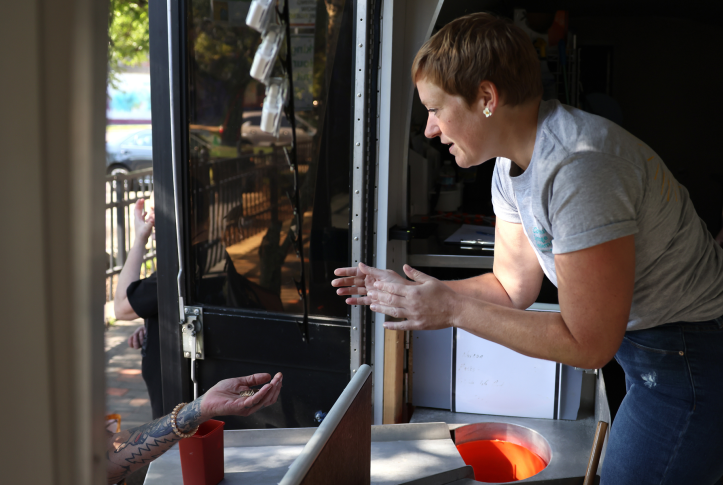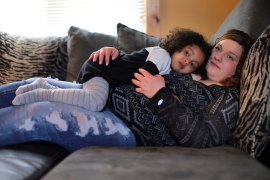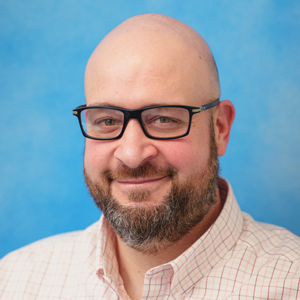Making the Most of Primary Care Encounters
In a commentary, Michael J. Barry and colleagues outline several ways that primary care providers can increase the utility of patient visits while minimizing the risk of excessive testing and overtreatment. Among other recommendations, they suggest providers use time spent on performing a “review of systems” (inquiring about symptoms for at least 10 of 14 organ systems) to deliver proven preventive services, such as counseling for smoking cessation, and to engage in shared decision making. The Centers for Medicare and Medicaid Services no longer requires providers to document a review of systems — a practice that the authors say sometimes led to unnecessary workups for patients — and pegs reimbursement to the complexity of medical decision-making or time spent instead. Michael J. Barry and Chien-Wen Tseng, “Moving to More Evidence-Based Primary Care Encounters: A Farewell to the Review of Systems,” Journal of the American Medical Association 328, no. 15 (September 2022):1495–96.
Leveraging Medicaid to Promote Racial Equity
In a high-level analysis, the authors look at who Medicaid programs insure, how the programs are financed, how services are delivered, and which reforms might promote health equity. They find that Medicaid programs have ample opportunities to reduce racial and ethnic health disparities by expanding access to their programs, seeking to reduce disparities within the programs, and focusing explicitly on equity in payment and care delivery reforms. Julie M. Donohue et al., “The US Medicaid Program: Coverage, Financing, Reforms, and Implications for Health Equity,” Journal of the American Medical Association 328, no. 11 (September 2022):1085–99.
A Framework to Align Value-Based Payment with Equity
Efforts to align health care payments with value have done little to advance health equity, and some value-based payment models have exacerbated inequities. In a commentary, Amol S. Navathe and Joshua M. Liao offer a framework to align value-based payment models with goals for health equity. It includes strategies for ensuring safety-net and rural organizations can participate in payment models; setting spending targets that account for patients’ clinical and social needs; and measuring inequities as part of value, among others. Amol S. Navathe and Joshua M. Liao, “Aligning Value-Based Payments With Health Equity: A Framework for Reforming Payment Reforms,” Journal of the American Medical Association 328, no. 10 (September 2022):925–26.
How Well Do MIPS Scores Measure Quality?
This study investigated whether primary care physicians’ scores on Medicare’s Merit-based Incentive Payment System (MIPS) are associated with performance on a broad range of other measures of quality. Based on scores for more than 80,000 physicians, the analysis found that MIPS scores were not consistently related to better performance either on process measures (e.g.., rates of diabetic eye exams or mammography screening) or outcomes (e.g., emergency department visits per 1,000 patients). The researchers also found that physicians with low MIPS scores but superior outcomes cared for more medically complex and socially vulnerable patients, compared with physicians with low MIPS scores and poor outcomes. They conclude that the MIPS program may not be effective at measuring and incentivizing performance improvement. Amelia M. Bond et al., “Association Between Individual Primary Care Physician Merit-based Incentive Payment System Score and Measures of Process and Patient Outcomes,” Journal of the American Medical Association 328, no. 21(December 2022):2136–46.
How Medicaid Programs Can Promote Perinatal Health in the Wake of Dobbs
In this commentary, the authors identify opportunities for state Medicaid agencies to protect and promote perinatal health and family supports in wake of the Dobbs decision. The authors suggest that in the states that are now severely restricting abortion access, Medicaid agencies could strengthen family planning services, including contraception options, and expand postpartum coverage. In other states, Medicaid programs may want to take steps to ensure beneficiaries have access to abortion services, given what may be rising demand from travelers from other states. Mohammad Hussain Dar et al., “Medicaid’s Moment for Protecting and Promoting Women’s Health,” Journal of the American Medical Association 328, no. 21 (November 2022):2105–06.
Did Bundled Payments Lead Hospitals to Avoid High-Risk Patients?
This study examines the effects of Medicare’s Bundled Payments for Care Improvement Advanced Model, in which hospitals are held accountable for the costs and outcomes of a 90-day episode of care. To meet spending targets, hospitals must decrease utilization or attract a relatively healthier patient population; critics worry these incentives could lead hospitals to stint care or avoid patients with complex medical and/or social needs. An analysis of Medicare claims data found no significant changes in patient selection associated with participation in this bundled payment program. Patients who were frail, had multiple conditions, or were dually enrolled in Medicare and Medicaid were more expensive initially, but their payments decreased over time, similar to trends among lower-risk patients. Karen E. Joynt Maddox et al., “Medicare’s Bundled Payments for Care Improvement Advanced Model: Impact on High-Risk Beneficiaries,” Health Affairs 41, no.11 (November 2022):1661–69.
Reducing Discrimination Against Patients with Disabilities
Despite civil rights laws that prohibit discrimination against Americans with disabilities in health care and elsewhere, many people with disabilities continue to experience disparities in health and health care. The authors of this Health Affairs article highlight areas of persistent inequities and suggest potential remedies, including requiring the use of accessible medical diagnostic equipment and communication methods; better standards of data collection; competency training for health care professionals; and non-discriminatory health insurance benefit design. Lisa Iezzoni et al., “Have Almost Fifty Years of Disability Civil Rights Laws Achieved Equitable Care,” Health Affairs 41, no. 10 (October 2022):1371–8.
CPC+ Did Not Yield Cost Savings, Quality Improvements for Commercial Insurers
An analysis of medical claims data from two large insurers in Michigan found that the multipayer Comprehensive Primary Care Plus (CPC+) payment reform model did not reduce spending or improve quality for private-plan enrollees even before accounting for incentive payments to providers. The authors say their analysis adds to existing evidence that CPC+ may cost payers money in the short term without improving care quality. Adam A. Markovitz, Roslyn C. Murray, and Andrew M. Ryan, “Comprehensive Primary Care Plus Did Not Improve Quality or Lower Spending for the Privately Insured,” Health Affairs 41, no. 9 (September 2022):1255–62.
Self-Reported Health Ratings Better in Medicaid Expansion States During the First Year of the Pandemic
Researchers compared self-reported health measures for residents of states that expanded eligibility for Medicaid to residents of states that didn’t and found coverage expansion appears to have offered some protection during the pandemic. In 2020, relative to earlier years, low-income people in expansion states were more likely to report very good or excellent health, fewer days of poor physical health, and lower rates of smoking and heavy drinking than low-income people in non-expansion states. They also saw higher flu vaccination rates in states that expanded Medicaid. The authors note these benefits were particularly salient for Black and Hispanic individuals. Alexandra Rakus and Aparna Soni, “Association Between State Medicaid Expansion Status and Health Outcomes During the COVID-19 Pandemic,” Health Services Research 56, no. 6 (December 2022):1332–41.
Primary Care Medical Home for Patients with Serious Mental Illnesses Yields Health Benefits
As part of a study at the Veterans Health Administration, patients with serious mental illnesses were given the option of receiving psychiatric care from a primary care physician and nurse care manager who consulted with a psychiatrist over phone, instant message, and email. Forty percent opted to do so. Compared with patients who continued to receive medical and behavioral health care from separate providers, those assigned to the primary care medical home were more likely to have appropriate health screenings for body mass index, lipids, and glucose. They also showed greater improvement on measures of chronic illness management (i.e., activation, decision support, goal-setting, counseling, and coordination) and care experiences as well as greater improvement in mental health–related quality of life and psychotic symptoms. Alexander S. Young et al., “The Effectiveness of a Specialized Primary Care Medical Home for Patients with Serious Mental Illness,” Journal of General Internal Medicine 37, no. 13 (October 2022):3258–65.
Use of Patient-Reported Outcomes by Health Systems and Physician Practices Varies by Condition, IT Capabilities
Researchers surveyed 323 health systems and more than 2,000 physician practices to determine the organizational capabilities associated with more extensive adoption of patient-reported outcome measures (PROMs). These measures can be used by clinicians to adjust treatment and deliver patient-centered care. The study found that among hospitals and medical groups within health systems, PROMs for pain and depression were more commonly adopted than ones for disabilities (50.6%, 43.8%, and 26.5%, respectively). In adjusted analyses, systems with more advanced health information technology (IT) were more likely to use disability and depression PROMs than systems with less advanced health IT. They found practices with more chronic care management processes, broader medical and social risk screening, and more processes to support patient responsiveness were more likely to adopt each of the three PROMs. Hector P. Rodriguez et al., “Adoption of Patient-Reported Outcomes by Health Systems and Physician Practices in the US,” Journal of General Internal Medicine 37, no. 15 (November 2022):3885–92.
Unsanctioned Safe Consumption Site for Injection Drug Use Associated with Reduced ED Visits, Hospitalizations
People who inject drugs are at higher risk of infectious disease as well as infections that can produce complications. A study of an unsanctioned, invite-only safe-consumption site where staff provided sterile equipment and administered naloxone to reverse overdoses found people who used it to inject drugs had 54 percent fewer emergency department (ED) visits and were 32 percent less likely to be hospitalized than people enrolled in the study who didn’t use the site. The authors suggest two possible explanations. Participants may have avoided opioid-involved overdoses by being monitored on site or may have been referred to primary care before complications developed. The study also found people using the site had a 24 percent lower risk of overdose within a six-month period, but the results were not statistically significant. They also found that only 12 percent of study participants used the site; among those who did, the median number of visits was 18 over a six-month period. Barrot H. Lambdin et al., “Reduced Emergency Department Visits and Hospitalisation with Use of an Unsanctioned Safe Consumption Site for Injection Drug Use in the United States,” Journal of General Internal Medicine 37, no. 15 (November 2022):3853–60.



